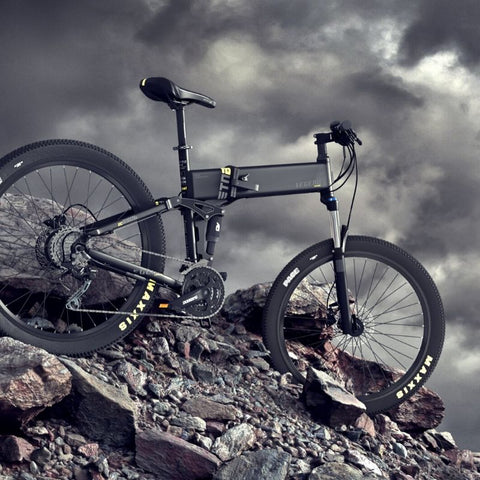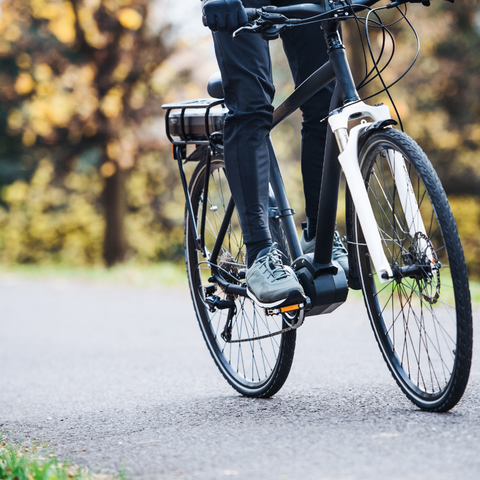Which E-Bikes are illegal In The UK
Electric bicycles, commonly known as e-bikes, have become increasingly popular in the UK. They offer riders a convenient, cost-effective, and eco-friendly way to get around and are particularly useful for commuting, leisure, and exercise. E-bikes are a hybrid of traditional bicycles and electric vehicles, providing a blend of pedal power and electric assistance that makes cycling more straightforward and more accessible to a wider range of people.
Despite their many benefits, e-bikes have raised questions about their legality, particularly in the UK, where regulations govern their use on public roads and paths. The UK government has set out a series of regulations and classifications that determine which e-bikes are legal to use on public roads and which are not. These regulations are designed to ensure the safety of riders, pedestrians, and other road users and to promote the use of sustainable transportation options.
Navigating the legal landscape of e-bikes in the UK can be complex and confusing, but it is important to understand the rules and regulations to stay safe and avoid legal issues. If you are considering purchasing an e-bike, it is recommended that you research the different classifications and regulations and ensure that your bike meets the legal requirements for use on public roads and paths.
Legal Classifications:
In the UK, e-bikes fall into three main categories based on their power output and speed capabilities, each with distinct legal implications:
Electrically Assisted Pedal Cycles (EAPCs):
Electrically Assisted Pedal Cycles, commonly known as e-bikes or electric bicycles, have become increasingly popular in recent years due to the convenience they offer in terms of transportation.
EAPCs are a type of e-bike considered legal if it meets specific criteria. These criteria include having pedals that can be used to propel the bike, an electric motor with a maximum power output of 250 watts, and a maximum assisted speed of 15.5 mph (25 km/h).
EAPCs are treated as conventional bicycles, meaning they can be used on cycle paths, and bicycles are allowed anywhere else. This means riders do not need a license, registration, or insurance to operate EAPCs. They are a great alternative to traditional bicycles as they offer an additional power source, making it easier for riders to tackle hills and cover longer distances.
Twist and Go E-Bikes:
Electric bikes, also known as e-bikes, come in different forms, each with its own set of regulations. Twist-and-go e-bikes, for example, are equipped with a throttle that engages the motor without requiring the rider to pedal.
Unlike electrically assisted pedal cycles (EAPCs), which are subject to less stringent regulations, twist-and-go e-bikes must be registered, taxed, and insured like a motorcycle. Additionally, riders must hold a valid driver's license and comply with motorcycle helmet requirements.
To meet legal requirements, bikes must meet specific technical standards, including lighting and braking regulations, ensuring the safety of riders and other road users.
Speed Pedelecs:
S-Pedelecs, also known as Speed Pedelecs, are e-bikes that offer pedal assistance up to 28 mph (45 km/h). Unlike standard Electrically Assisted Pedal Cycles (EAPCs), S-Pedelecs are subject to the same regulations as mopeds or motorcycles.
This means they must be registered, taxed, insured, and comply with motorcycle helmet requirements. Riders must also hold a valid driver's license, and the bike must meet specific technical standards.
It's important to note that S-Pedelecs offer a faster and more powerful ride compared to standard e-bikes, making it necessary for riders to follow the regulations and safety guidelines to ensure a safe and enjoyable riding experience.
Illegal E-Bikes:
While most e-bikes sold in the UK comply with regulations, illegal e-bikes have entered the market. These may include:
High-Power E-Bikes:
Electric bikes, or e-bikes, are becoming increasingly popular for transportation and recreation. However, it's important to note that not all e-bikes are legal to use on public roads and paths in the UK. E-bikes with motors that exceed 250 watts or are capable of speeds higher than 15.5 mph when not pedalling are illegal to use without meeting specific requirements.
Failure to comply with these requirements can result in legal consequences for riders, such as fines or even seizure of the e-bike.
Moreover, using such non-legal e-bikes on public roads and paths may pose safety risks for the rider, other road users, and pedestrians, as they can travel at high speeds and may be difficult to control. It's important for e-bike riders to be aware of the legal requirements and safety risks associated with their bike and to take appropriate measures to ensure their own and others' safety.
Non-Compliant Conversions:
In some instances, people may try to modify regular bicycles by installing electric motors and batteries that are not designed or approved by the manufacturer. This type of conversion is known as a makeshift or non-compliant conversion. These modifications often bypass essential safety and regulatory standards, so they may not have the necessary safety features to prevent accidents or injuries.
Additionally, many non-compliant conversions may exceed legal power and speed limits, which can make them illegal for road use. It's essential to be aware of these risks and always follow the manufacturer's guidelines when modifying bicycles.
Enforcement and Penalties:
The Police and Government have been taking steps to crack down on illegal e-bikes to ensure road safety and compliance with regulations. Riders caught using illegal e-bikes may face penalties, including fines, points on their driving license, and, in severe cases, bikes confiscation.
E-bikes are becoming increasingly popular in the UK, and riders need to know the legal classifications and requirements governing their use. There are different types of e-bikes, and each has specific rules that must be followed to ensure compliance with the law. By choosing a compliant e-bike, riders can rest assured that they are not breaking any laws and promoting safety on roads and paths.
In addition to following the rules and regulations, riders should prioritise safety, responsibility, and sustainability. It's important to wear a helmet and other appropriate safety gear, be aware of other road users, and maintain a safe speed. Riders should also be responsible and considerate of others, particularly when using shared paths or roads.
Navigating the Legal Landscape of E-Bikes in the UK
Purchasing an e-bike from a reputable retailer is also essential to avoid potential legal pitfalls associated with illegal e-bikes. Illegal e-bikes may not meet the legal requirements for safety and performance, and riders may face penalties or fines for using them on public roads or paths.
By prioritising safety, responsibility, and compliance with relevant laws, e-bike riders can contribute to a harmonious and sustainable transport ecosystem. E-bikes have the potential to positively impact the environment and reduce traffic congestion, but it's up to riders to use them responsibly and in accordance with the law.
Sources:
-
Gov.uk. "Electric bikes: rules and regulations." Accessed January 10, 2024. https://www.gov.uk/electric-bike-rules.
-
Cycling UK. "E-bike law in the UK." Accessed January 10, 2024. https://www.cyclinguk.org/electric-bike-law.
-
The Department for Transport. "Electrically Assisted Pedal Cycles in Great Britain, 2016." Accessed January 10, 2024. https://assets.publishing.service.gov.uk/government/uploads/system/uploads/attachment_data/file/518193/electrically-assisted-pedal-cycles.pdf.







